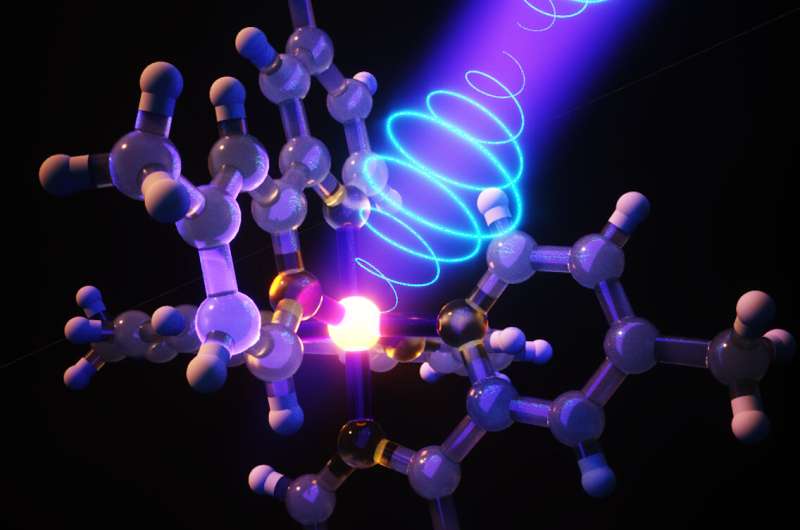Tracking chirality in real time

Chiral molecules exist in two forms, called enantiomers, which are mirror images of each other and non-superimposable—much like a pair of hands. While they share most chemical and physical properties, enantiomers can have adverse effects in (bio)chemical phenomena. For example, a protein or enzyme may only bind one enantiomeric form of a target molecule. Consequently, identification and control of chirality is often key to designing (bio)chemical compounds, e.g., in the food, fragrance, and pharmaceutical industries.
A most common technique for detecting chirality is called circular dichroism, which measures how chiral samples absorb left- and right-circularly polarized light differently to directly identify pairs of enantiomers. Circular dichroism can also help resolve the conformation of a molecule through its chiral response—a feature that has made it a popular analytical tool in (bio)chemical sciences.
However, circular dichroism has so far been limited in time-resolution and spectral range. Researchers, led by Malte Oppermann in the group of Majed Chergui at EPFL, have now developed a new time-resolved instrument that measures circular dichroism changes in fractions of a picosecond (one trillionth of a second), meaning that it can take ultrafast snapshots of a molecule's chirality throughout its (bio)chemical activity. This makes it possible to capture the chirality of photoexcited molecules and to resolve the conformational motion that drives the conversion of the absorbed light energy.
In a collaboration with the group of Jérôme Lacour at the University of Geneva and Francesco Zinna at the University of Pisa, the researchers used the new method to investigate the magnetic-switching dynamics of so-called "iron-based spin-crossover complexes"—an important class of metallo-organic molecules with promising applications in magnetic data storage and processing devices. After decades of research, the deactivation mechanism of their magnetic state has remained unresolved, despite its importance for magnetic data storage.
Carrying out a time-resolved circular dichroism experiment, the researchers discovered that the loss of magnetization is driven by a twisting of the molecule's structure that distorts its chiral symmetry. Remarkably, the team was also able to slow down the decay of the magnetic state by suppressing the twisting motion in modified complexes.
"These ground-breaking experiments show that time-resolved circular dichroism is uniquely suited to capture the molecular motion that drives many (bio)chemical processes," says Malte Oppermann. "This offers a new way for investigating challenging dynamic phenomena—for example the ultrafast rotations of synthetic molecular motors, and the conformational changes of proteins and enzymes in their native liquid environment."
The study is published in Nature Chemistry.
More information: Malte Oppermann, Chiral control of spin-crossover dynamics in Fe(II) complexes, Nature Chemistry (2022). DOI: 10.1038/s41557-022-00933-0. www.nature.com/articles/s41557-022-00933-0
Journal information: Nature Chemistry
Provided by Ecole Polytechnique Federale de Lausanne



















